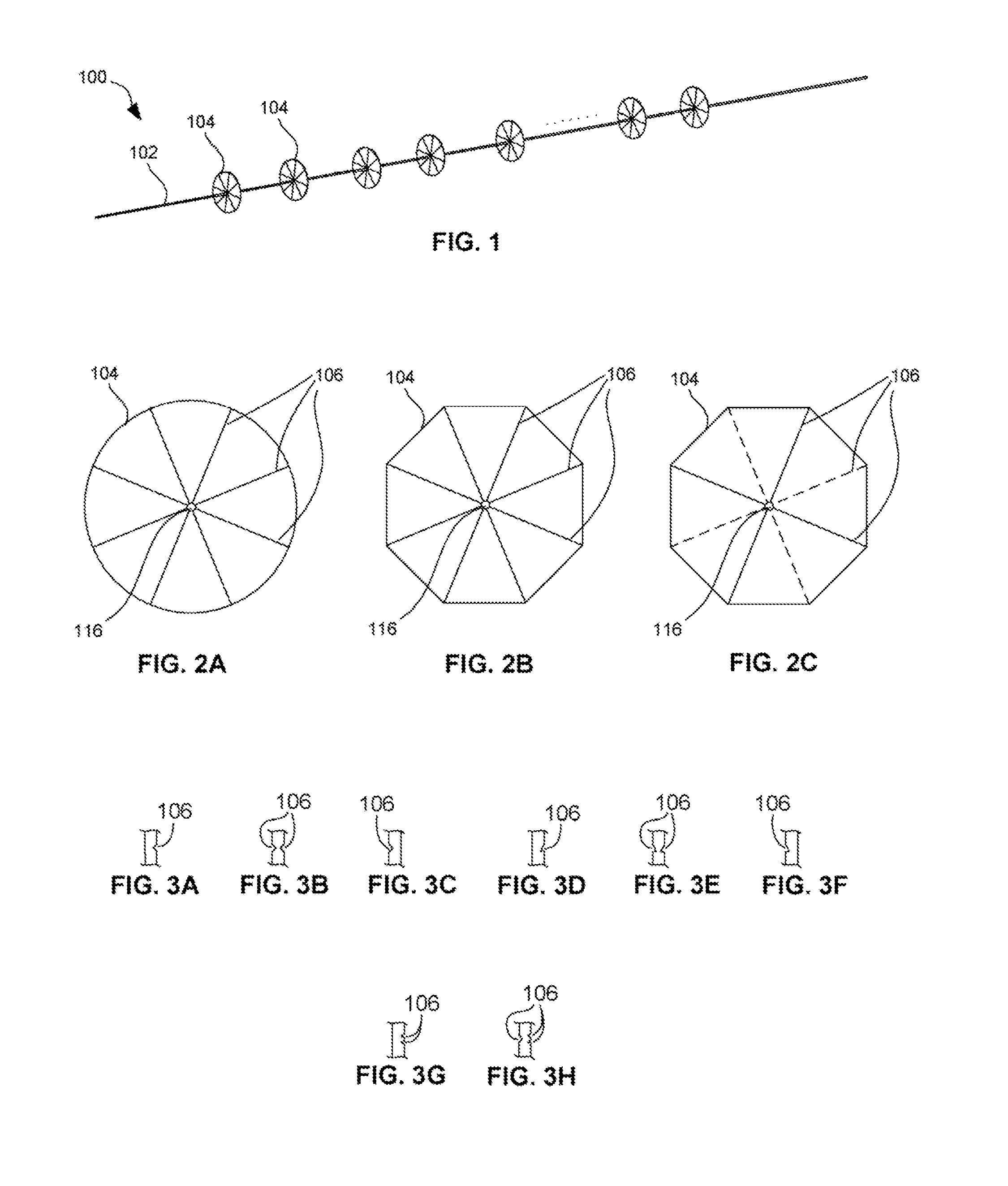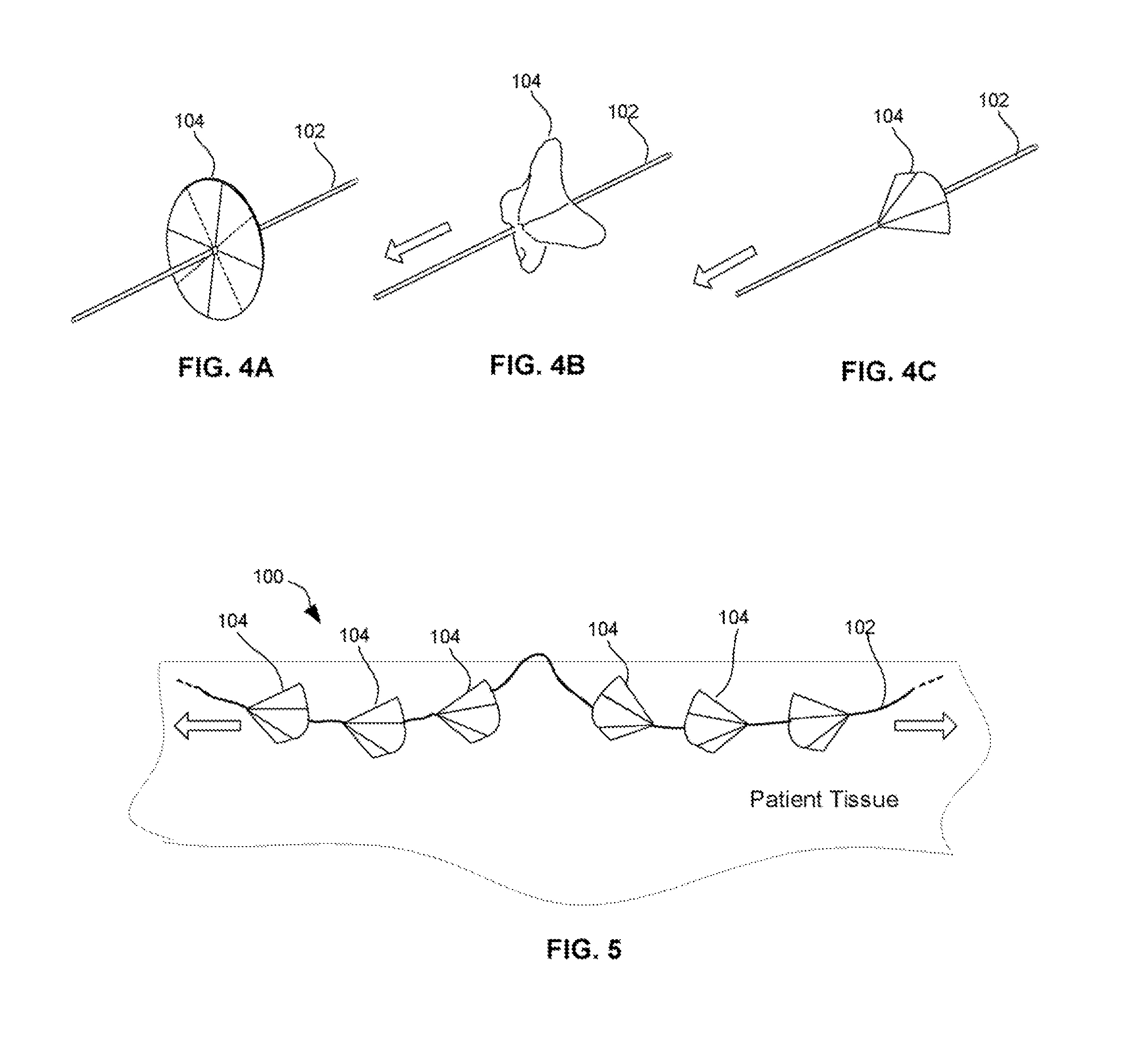Self-retaining sutures with bi-directional retainers or uni-directional retainers
a self-retaining suture and retainer technology, applied in the field of self-retaining sutures, can solve the problems of limiting the effectiveness of barbs, being rejected by the body rather than absorbed, and inflammation
- Summary
- Abstract
- Description
- Claims
- Application Information
AI Technical Summary
Benefits of technology
Problems solved by technology
Method used
Image
Examples
Embodiment Construction
[0037]Prior to setting forth the invention, it may be helpful to an understanding thereof to first set forth definitions of certain terms that are used hereinafter.
[0038]“Self-retaining system” refers to a self-retaining suture together with means for deploying the suture into tissue. Such deployment means include, without limitation, suture needles and other deployment devices as well as sufficiently rigid and sharp ends on the suture itself to penetrate tissue.
[0039]“Self-retaining suture” refers to a suture that does not require a knot or a suture anchor at its end in order to maintain its position into which it is deployed during a surgical procedure. These may be monofilament sutures or braided sutures, and are positioned in tissue in two stages, namely deployment and affixation, and include at least one tissue retainer.
[0040]“Tissue retainer” (or simply “retainer” or “barb”) refers to a suture element having a retainer body projecting from the suture body and a retainer end ad...
PUM
 Login to View More
Login to View More Abstract
Description
Claims
Application Information
 Login to View More
Login to View More - R&D
- Intellectual Property
- Life Sciences
- Materials
- Tech Scout
- Unparalleled Data Quality
- Higher Quality Content
- 60% Fewer Hallucinations
Browse by: Latest US Patents, China's latest patents, Technical Efficacy Thesaurus, Application Domain, Technology Topic, Popular Technical Reports.
© 2025 PatSnap. All rights reserved.Legal|Privacy policy|Modern Slavery Act Transparency Statement|Sitemap|About US| Contact US: help@patsnap.com



